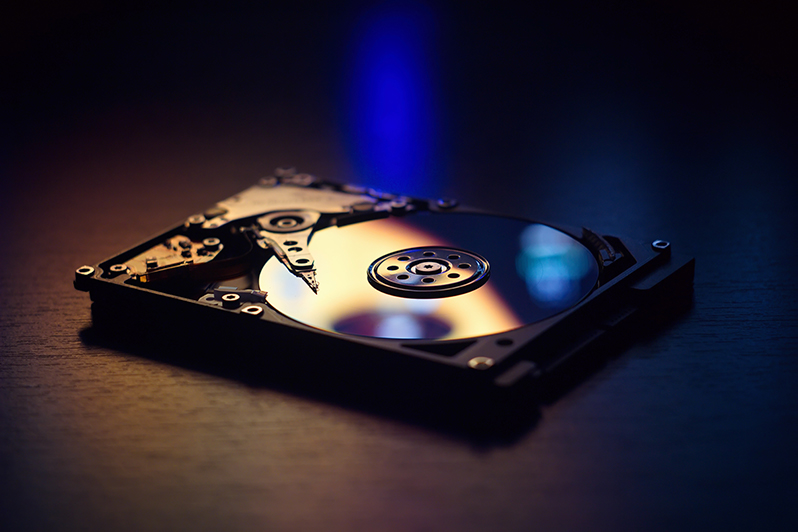Discovery entails a fair amount of detective work for lawyers, as they comb through files and records searching for information that will support their case and provide evidentiary value. There are times, however, when professional investigators need to be brought in to dig deeper into available data and conduct more thorough analyses.
Digital forensics, also known as cyber forensics, is a crucial field that deals with the investigation and analysis of digital evidence to uncover and prevent cybercrimes. The need for digital forensics has become increasingly important in both criminal and civil cases.
This article explores the key concepts, challenges, and tools used in digital forensics, as well as the different branches it encompasses.
Why Is Digital Forensics Important
Digital forensics is typically associated with criminal law since it involves gathering evidence from digital sources that implicate an individual in a crime. Digital forensics plays a key role in preventing and investigating various crimes, such as fraud, identity theft, hacking, and even terrorism.
However, that view is a bit too narrow to convey the full scope of digital forensics and the role it plays in legal matters. We prefer a more inclusive digital forensics definition that covers both criminal and civil cases. It’s a critical step in the eDiscovery process, especially when data needs to be preserved in pristine condition or when attorneys need to confirm the authenticity of collected evidence.
Digital forensics is also crucial for ensuring the integrity of legal proceedings. In a world where digital evidence plays a significant role, it is essential to have experts who can authenticate and validate the evidence presented in court. Digital forensic analysts follow strict protocols and adhere to industry standards to ensure that the evidence collected is admissible in court. By doing so, they help maintain the credibility of the justice system and ensure that the guilty are held accountable.
In many cases, lawyers will turn to a digital forensics professional when they believe potential evidence has been deleted or erased. Deleted emails, text messages, images, and other digital media could — and likely do — contain information that helps make one side’s case in a legal dispute. These experts attempt to retrieve deleted documents, crack data encryption, and restore corrupted files. These actions fight attempts to hide or obfuscate culpability or guilt in a legal matter by hiding digital evidence by deleting files, encryption, and even breaking hardware.
What Lawyers Need To Know?
Digital forensics is an increasingly important component of the discovery process, especially as cases and trials revolve around — and often hinge upon — digital data. This practice is particularly important in criminal cases where chain of custody is a major concern, but it’s just as relevant in civil cases as well.
Lawyers need to understand the ins and outs of digital forensics to ensure the integrity of digital data being used as evidence in support of their cases.
Key Concepts in Digital Forensics
When understanding what digital forensics is, several key concepts are essential to understanding the field. Let's dive deeper into these concepts to gain a comprehensive understanding of their significance.
Digital Evidence
It is crucial to collect, preserve, and analyze digital evidence properly to ensure its authenticity and integrity.
- Types of digital evidence include emails, documents, images, videos, social media posts, and computer system artifacts like metadata and logs
- Metadata, which includes information about the creation, modification, and access of digital files, can offer insights into the timeline and context of events. For example, examining the metadata of a document can reveal when it was created, modified, and accessed, potentially shedding light on the actions of a suspect.
- Logs, on the other hand, record various system activities, such as network connections, login attempts, and file transfers. Analyzing these logs can help investigators reconstruct the sequence of events and identify any suspicious or malicious activities that took place.
- Digital forensic examiners employ specialized techniques and tools to recover and extract evidence from digital devices, ensuring that lawyers can use it effectively in legal proceedings.
The Digital Crime Scene
A digital crime scene refers to the virtual environment where a cybercrime has been committed. It encompasses various digital devices, networks, and storage media. Digital forensic investigators must:
- Identify and preserve digital evidence by thoroughly analyzing the crime scene.
- Consider how to move evidence from the crime scene to the courtroom by maintaining a proper chain of custody. This is a key part of digital investigation.
Chain of Custody
One of the most critical aspects of cyber forensics is maintaining the chain of custody. It involves documenting the movement and handling of evidence from the moment it is collected until it is presented in court. Improperly handled evidence could become inadmissible if it can be proven that someone could have tampered with it, which can be particularly easy with digital evidence.
By maintaining a strict chain of custody, digital forensic experts can show that the evidence has not been tampered with or compromised. This is crucial in establishing the authenticity and reliability of the evidence, making it admissible in legal proceedings.
File Systems
Understanding file systems is crucial for digital forensic experts. File systems dictate how data is stored, organized, and accessed on digital devices. Different operating systems use different file systems, such as FAT32, NTFS, and HFS+, each with its intricacies and structures.
By comprehending the intricacies of file systems, digital forensic experts can navigate through the complex maze of data storage and retrieval. They can locate and extract relevant files, recover deleted data, and piece together fragmented information to reconstruct a digital timeline of events.
Encryption
In today's digital landscape, encryption plays a significant role in protecting sensitive information. Encryption algorithms scramble data, making it unreadable without the appropriate decryption key. For digital forensic experts, understanding encryption techniques is vital for accessing encrypted data during investigations.
While encryption can pose challenges to digital forensic experts, they employ various methods to overcome them. These methods include identifying encryption algorithms used, searching for encryption keys or passwords, and analyzing memory dumps to capture encryption keys while they are in use.
Process of Digital Forensics
The process of digital forensics involves several stages, starting with the identification and preservation of potential evidence. This is followed by:
- Acquisition of data from digital devices, making sure not to alter or tamper with the original data.
- Examination and analysis of the acquired data, where forensic tools and techniques are used to extract valuable information.
- Documenting and reporting what they found in a clear and concise manner.
Forensic experts employ various data recovery techniques, such as file carving, which involves searching for file signatures and reconstructing fragmented files. They also use disk imaging to create a bit-by-bit copy of storage media, ensuring that no data is altered or lost during the recovery process.
By utilizing these data recovery techniques, digital forensic experts can retrieve valuable evidence that may have otherwise been lost, providing crucial insights into a digital investigation.
Challenges and Limitations of Digital Forensics
Despite its importance, digital forensics faces several challenges and limitations. Rapidly evolving eDiscovery technology, including early case assessment techniques, often renders older forensic techniques obsolete, requiring forensic experts to constantly update their knowledge and skills. Encryption and anonymization methods also pose challenges in recovering and examining data. Additionally, the sheer volume of digital devices and data can strain resources and increase the time required for thorough examinations.
What Tools Do Digital Forensic Examiners Use?
Digital forensic examiners use a wide range of eDiscovery softwares to collect, analyze, and present digital evidence. These tools include both hardware and software solutions designed to extract data from various digital devices, such as computers, smartphones, and tablets. Forensic imaging tools enable examiners to create exact copies of digital media for analysis, while specialized software allows for the recovery and analysis of deleted or hidden files.
The Different Branches of Digital Forensics
Digital forensics is a multidisciplinary field that encompasses several branches specialized in different investigations:
- Computer forensics focuses on the examination of computers and computer systems.
- Mobile device forensics deals with the analysis of smartphones, tablets, and other mobile devices.
- Network forensics involves the examination of network traffic and logs to detect and investigate network security incidents.
- Database forensics focuses on the analysis of data stored in databases, while memory forensics involves the extraction of volatile data from a computer's memory.
- Multimedia forensics specializes in the analysis of digital images, videos, and audio recordings for authenticity and integrity.
- Cybersecurity forensics focuses on incident response, investigating cybercrimes, and preventing future attacks.
What Does Digital Forensics Cover?
Digital forensics covers a wide range of investigations and activities. With the increase in digital platforms in recent years, there are a lot of different sources of information that could apply to the discovery process. Some notable examples include:
- Desktop computers.
- Hard drives.
- Laptops.
- External drives such as USB drives.
- Storage media like CD-ROMs.
- Smartphones, tablets, and other mobile devices.
- SD cards and memory cards.
- GPS systems.
Forensic activities include the recovery of deleted files, retrieval of internet browsing history, analysis of email communication, examination of social media accounts, identification of malware and malicious software, tracking user activities on digital devices, and much more.
That’s a lot of ground to cover, and thanks to the Internet of Things, the scope of eDiscovery has increased even more. The IoT encompasses a wide variety of products that connect to networks and can capture, store, and transmit data. IP-enabled cameras, smart speakers, and wearables are all examples of IoT technology that might be relevant to a civil case.
Network-connected devices are growing in numbers, and IDC predicts that by 2025, there will be 41.6 billion IoT devices in the world. At that time, the entire IoT will produce 79.4 zettabytes of data. For reference, a single zettabyte is equivalent to 1 billion terabytes. Digital forensics and eDiscovery are likely going to become much more complicated and intensive over the next few years.
Digital Forensics Best Practices - Main Steps
In many ways, digital forensics parallels typical eDiscovery processes. As outlined by the International Organization for Standardization, there are four primary steps to follow in digital forensics:
- Identification: As with eDiscovery in general, digital forensics begins by diligently reviewing data, records, and files and determining which documents and information provide evidentiary value and are relevant to the case or lawsuit.
- Collection: Once relevant data has been identified, the next step in the digital forensics process is to collect the physical devices storing that information.
- Acquisition: Extracting data from hard drives, storage media, and other devices needs to be handled with the utmost diligence to prevent corruption and maintain integrity.
- Preservation: Digital forensics necessitates strict preservation methods. The only difference between this process and eDiscovery preservation is the rationale. Digital forensics experts need to create a clear and unimpeachable chain of custody so their collection and digital forensics analysis methods will hold up in court. Lawyers involved in civil cases, meanwhile, are more concerned with preventing countersuits or allegations of negligence.
Both digital forensics and eDiscovery are extremely involved processes requiring a meticulous eye for detail and a clear understanding of what data is relevant to a given case and should be collected, preserved, and shared with the opposing counsel.
Follow Digital Forensics Best Practices
Lawyers must work with digital forensics professionals who adhere to the lengthy forensics guidelines laid out by the American Bar Association. If not, they run the risk of having evidence that would support or even prove their case excluded from a trial.
Chain of custody is an important matter for both criminal and civil cases when dealing with digital forensics. Legal teams need to be able to demonstrate precisely how data was collected and preserved so there’s no question regarding its authenticity. Because it’s relatively easy to change or alter digital records, any data gathered through forensics that cannot be fully accounted for is likely to be removed from consideration.
Another issue to account for is data diffusion. Due to the widespread use of IoT devices and wireless internet, many individuals may share network connections and machines containing relevant information. As such, it can be difficult to determine conclusively who owns data that is transmitted between devices and across publicly accessible networks.
Also, keep in mind when selecting a digital forensics partner that they may be asked to testify in court to speak about their collection methods and affirm that they followed forensics protocols to the letter. The more experienced and respected your digital forensics team is, the more persuasive they will be when giving testimony.
Make Room For A Digital Forensic Plan Within Your Greater Discovery Plan
There’s no telling what information will come up during the discovery process. It’s not unusual for parties involved in a legal pursuit to attempt to obfuscate critical information by deleting digital correspondences, erasing computer files, or encrypting documents. Depending on the exact circumstances, this activity may be considered criminal activity and punishable as such.
In other cases, however, data with evidentiary value is unavailable through no fault of the owner. Hard drives can be damaged, files can be corrupted and records can be lost through the normal course of business. When such events occur, legal teams must have the ability to retrieve lost or erased documents to help support their case. Partnering with expert digital forensics specialists is a smart long-term strategy that will ensure lawyers can make their case even when the evidence needed seems lost for good.
If you found this article interesting, be sure to subscribe you and your team to our monthly blog distribution email. This email list is solely for blog distribution purposes and we promise to only send one email per month. To subscribe, simply scroll down and fill out the "Subscribe" form below the comment box.
-1.png?width=400&height=164&name=DWRLogoClassic%20-%20Copy%20(2)-1.png)









Comment On This Article